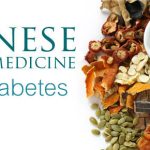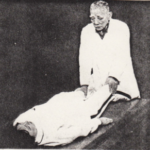Chinese Herbal Formulas–Muscular Skeletal Disorders
- Treating Musculoskeletal Disorders With Chinese Herbal Formulas – Part II: Chronic
By Jake Paul Fratkin, OMD, LAc
In my last article, Treating Musculoskeletal Disorders with Chinese Herbal Formulas: Part I, we focused on formulas for trauma and heat-bi syndromes. Now, I want to review important formulas for chronic bi syndrome.
“Bi” translates as painful-obstruction, and is applied to a variety of conditions affecting the musculoskeletal frame, including joints, muscles, bone and tendon. These conditions include chronic pain following injury, joint degeneration, or arthritis. (In Part III, the next and final installment, we will concentrate on back pain, sciatica and spinal degeneration.)
In Chinese medicine, bi syndrome includes stasis of qi and blood, and may be further differentiated by preponderance of damp, heat or cold. The etiology involves exogenous factors intruding on an underlying deficiency of qi, blood or yang. Formulas are sub-grouped into the following: wind-cold damp bi, blood stagnation bi, deficiency bi, cold bi, and heat bi.
WIND-COLD-DAMP BI
Wind-cold-damp-bi, also called “wandering bi,” is characterized by pain that moves around various locations, and is aggravated by damp weather. It is typical in arthritis, rheumatism and pain associated with aging, including joints, muscle and tendon. The accumulation of damp impedes the flow of qi and blood, causing muscular and joint numbness, pain, swelling or feelings of heaviness. The formulas use warming herbs to dispel wind-damp and invigorate blood flow.
Typical classical formulas include Juan Bi Tang and Shu Jing Huo Xue Tang. There are actually two classical formulas with the name Juan Bi Tang, and both are available in product form. The first, from 1178, is effective for chronic joint pain or sore muscles aggravated by wind-cold damp in patients with pre-existing deficiency of qi and blood. It is both warming and invigorating, containing herbs for moving blood and dispelling wind-damp, while boosting qi and blood.
The second version of Juan Bi Tang (1732) is useful for joint pain or sore muscles due to wind-cold-damp in patients with a recent onset, and more acute in nature. Lacking the qi and blood tonics of the first formula, above, this version more aggressively disperses wind and damp, while moving blood, dispersing cold and warming the channels. (Herbs commonly found in these formulas are listed in the footnotes.)
Shu Jing Huo Xue Tang is available from numerous sources. This large prescription from Gong Ting-Xian in 1587 addresses excess patterns of wind-damp bi syndrome complicated by underlying blood deficiency. Symptoms include joint pain, especially in the knees, as well as poor circulation or soreness in the muscles. While 36 percent of the formula may be considered to be addressing wind, cold and dampness, it also contains the blood-building formula Si Wu Tang as 28 percent of its composition.
Other herbal products are available that address wind-cold-damp bi syndrome.
BLOOD STAGNATION BI
Blood stagnation bi is characterized by more severe pain in the joints and muscles, with numbness and poor circulation. Pain tends to be constant and fixed in the same location, and include pain due to injury, surgery or degeneration. Locations include neck and spine, shoulder or hip pain. The tongue is dark and the pulse is choppy. The formulas use herbs that move qi and blood, and are a stronger in herbs that break blood stasis. They may be too invigorating in patients with marked deficiency, but are clinically useful in the elderly who suffer poor blood circulation. These formulas, in general, contain herbs that are prohibited during pregnancy, and prohibited when a patient is on pharmaceutical warfarin (Coumadin).
A representative classical formula that is available in product form is Shen Tong Zhu Yu Tang. Other formulas are also available. Typically, formulas combine herbs that dispel wind and dampness with blood moving herbs.
DEFICIENCY BI
Deficiency bi formulas use herbs that move qi and invigorate blood, but also address underlying deficiencies by employing herbs that tonify qi, blood and/or yang. The pulse is weak, and may be floating or sunken. The formulas are beneficial in chronic and long-term presentations, and can also be used for numbness and tingling due to deficiency, as well as wei syndromes, which involve weakness to the point of flaccid paralysis.
Classical representative formulas vary in application. Bu Yang Huan Wu Tang addresses hemiplegia and flaccidity following stroke or spinal injury. It can also be used for numbness and tingling related to peripheral neuropathy. San Bi Tang was originally created for post-partum women contracting wind-cold-damp and developing rheumatism. It is commonly used for wind-dampness affecting patients with deficiency of qi and blood, and is more appropriate as patient age. Other formulas are also available.
COLD BI
Cold bi formulas include herbs that are warming and invigorating, and are particularly useful for painful limbs that are worse in cold weather. Classical formulas that are available as products includeDang Gui Si Ni Tang and Xiao Huo Lou Dan.
Dang Gui Si Ni Tang, a Shang Han Lun formula, treats cold and stiff hands and feet due to blood deficiency, or exogenous invasion of cold. It is useful for cold limbs and poor circulation due to blood deficiency, especially during or following menses.
Xiao Huo Lou Dan is used for, sequelae of stroke leading to hemiplegia, spasticity or flaccidity, numbness, etc., in the limbs. It can also be used for poor circulation aggravated by cold and damp, employing herbs that invigorate blood while warming the channels. It contains hot medicinals that dispel cold and dampness, and strong herbs to break blood stasis.
In the concluding article to this series, we will discuss formulas for back pain, sciatica and spinal degeneration.

